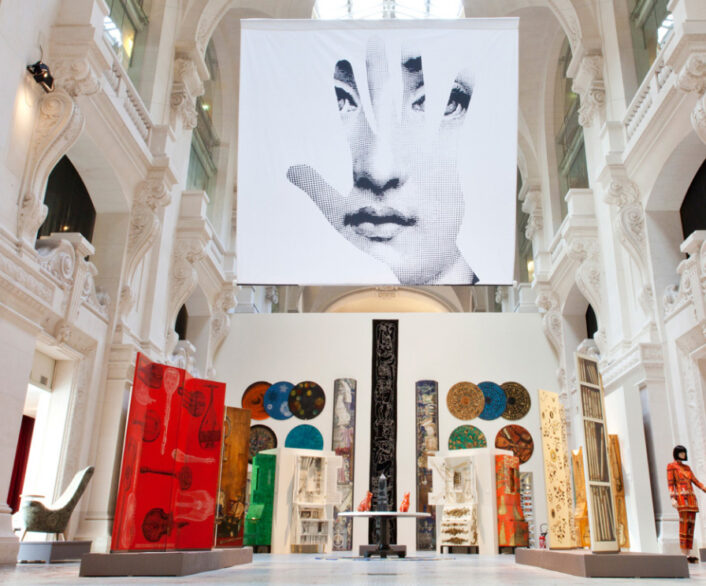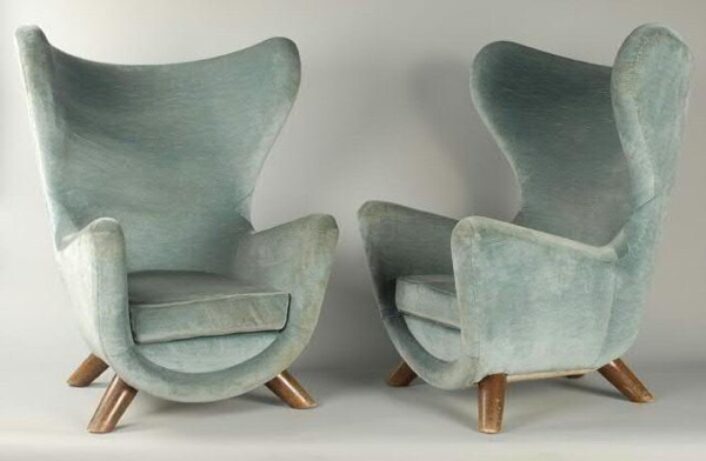Design
Noé Duchaufour-Lawrance
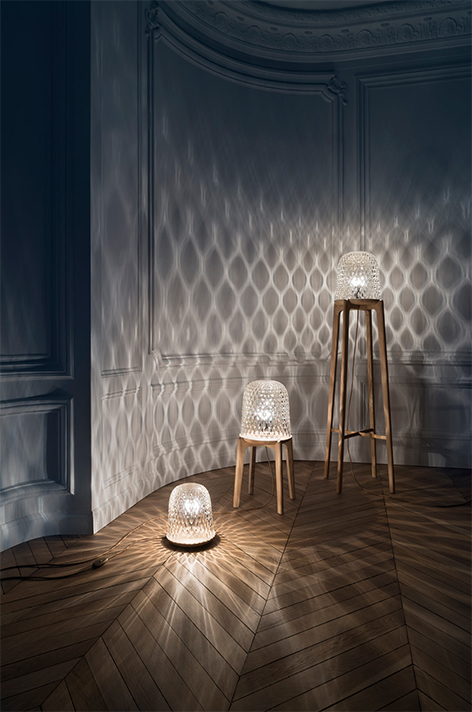
In 2017, Duchaufour-Lawrance designed a stunning crystal collection for Saint-Louis, Europe’s oldest crystal house.
Image courtesy of: Design Milk
Noé Duchaufour-Lawrence is a well-respected French designer; interestingly, he decided to relocate to Portugal at the start of the Covid-19 lockdown. The esteemed designer has worked with many of the world’s top design companies from Hermes to Ligne Roset. Whether he is working on a small or large scale project, he brings forth his innovate design. On the small scale, he created a perfume bottle for Paco Rabanne; and on a large scale, he designed an entire furniture collection for Ceccotti.
The designer is the son two artists; he studied metal sculpture in Paris’ Ecole Nationale Superieure des Arts Appliques. He says (courtesy of Matches Fashion), “I wanted to make furniture the minute I learned about star designers Ron Arad and Philippe Starck as a kid, from looking at catalogues.”
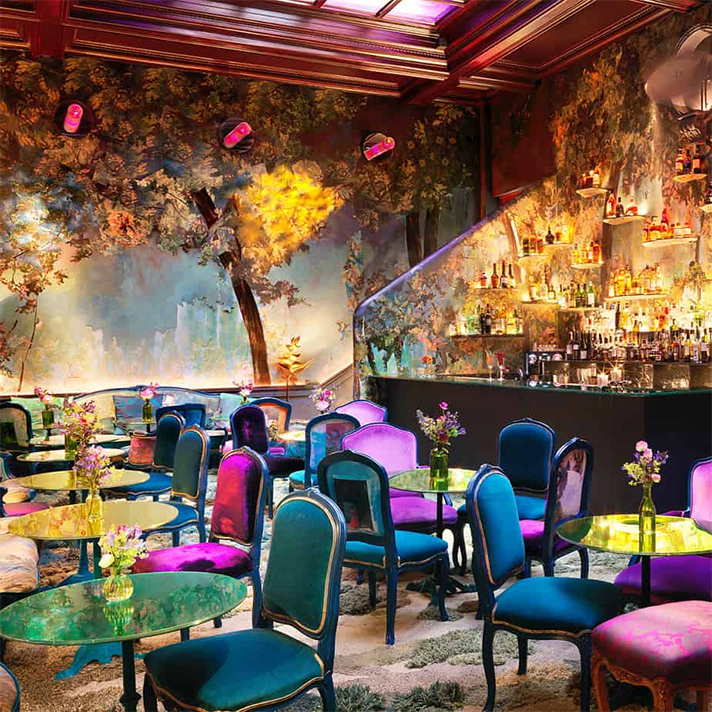
Sketch’s “Glade Room” was one of Duchaufour-Lawrance’s first major jobs.
Image courtesy of: Two Woods Dandelions
The big break came when he was asked to design Sketch, a restaurant that was due to open at the original Christian Dior headquarters site. Owner Mourad Mazouz was looking for a young designer to create a space where there was a distinct personality to each room. Deemed the world’s most Instagramed restaurant, it is “Igloo” that has garnered the most attention. The intimate round shape at the top of the bar’s double-level staircase is not what you expect to go along with the “tourist destination restrooms” designed as egg-shaped pods under a multi-colored ceiling.
Duchaufour-Lawrance said, “Sketch happened as quite a surprise. I found myself enrolled in the project with quite a few other designers to imagine the architectural concept. The toilets, which looked like egg-shaped pods and made people talk.”
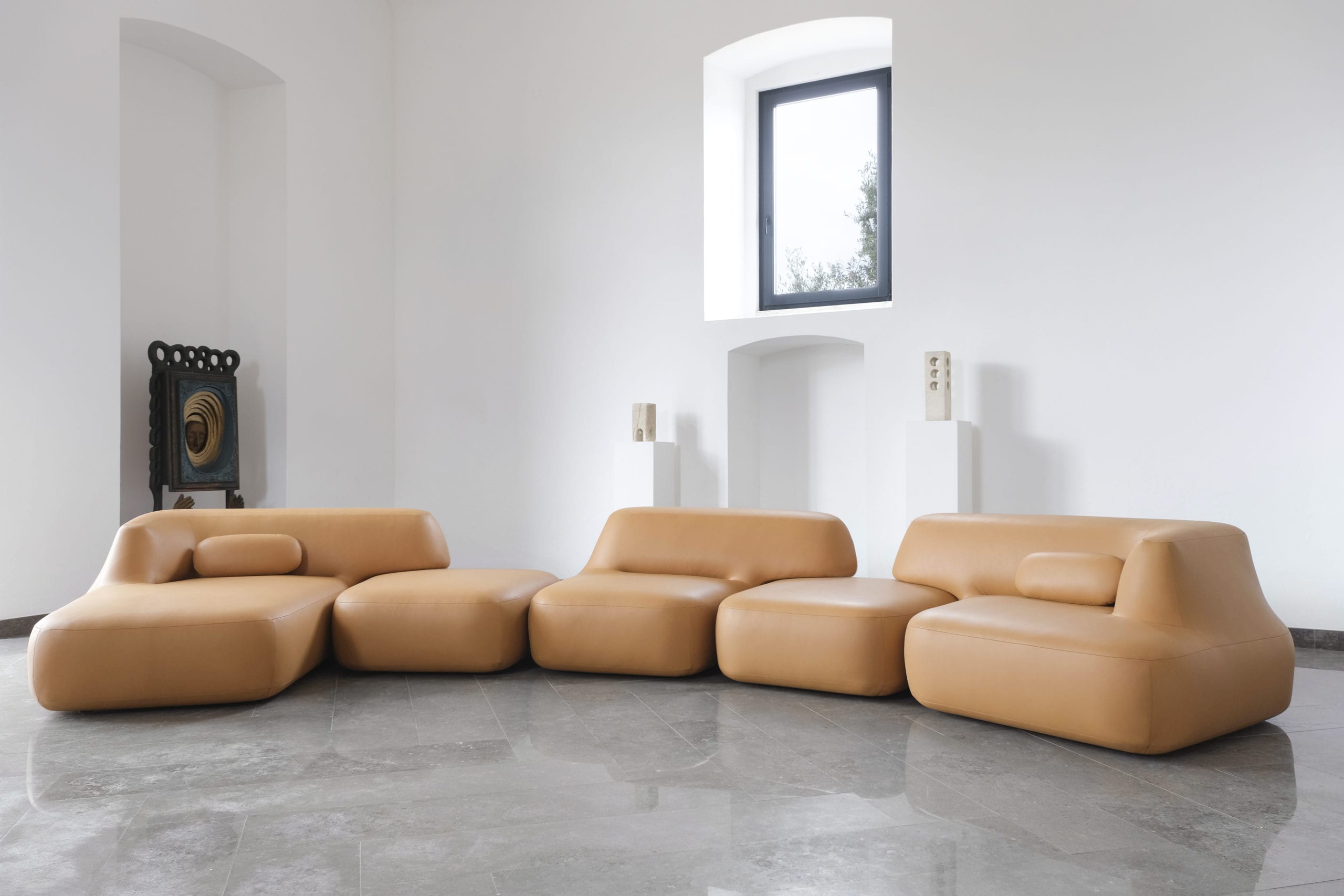
Jon Sofa created by Ateliers Jouffre
Image courtesy of: Par Excellenceny, photographed by: Clement Chevelt
The unexpected move to Portugal has allowed the designer to travel the country and sketch his findings in mediums such as ink and watercolor… ones he had not previously experimented with much. About his new home, he says (courtesy of an article with Gisela Williams for Departures), “Portugal has a rich heritage of craft; I spent time searching out and spending time with artisans throughout the country and deep-diving into their process.”
After the year he spent exploring and learning, Duchaufour-Lawrance was ready to fully devote to the project he has been mulling over for years… “creating a design lab inspired by his environment and the raw materials and talented artisans around him.” In addition, he says he will continue to design bespoke furniture for private clients. These limited-edition pieces and collections will be made by French artisans.
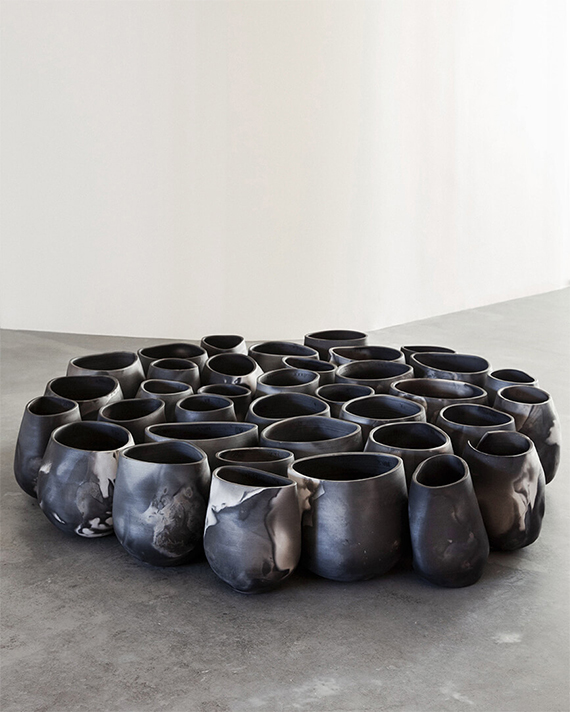
The Lisbon gallery opened in 2020.
Image courtesy of: International Contemporary Furniture Fair
Made in Situ is a project that came about after the designer explored Portugal through human encounters, local materials, and crafts. The first collection was one of objects made of black ceramic, it is called Barro Negro. The immersive installation opened in the gallery to sound and a film.
The gallery, studio, and exhibition space is near Lisbon’s botanical gardens in Principe Real. Here, Duchaufour-Lawrance collaborates with traditional Portuguese craftsmen and experiments on his own. For Barro Negro, the gallery’s first exhibition, the unglazed earthenware is fired underground in pits. The pieces are made on Serra do Caramulo, a mountain north of Lisbon where locals have been producing these unique pieces for many years. Coming across this pottery in Lisbon’s National Museum of Ethnology’s archives, the designer was instantly taken with the material. The firing process which is called “soenga,” dates back to the Neolithic age. Luckily, Duchaufour-Lawrance was able to find two artisans who helped him organize this “soenga,”… a process that typically involves the entire village’s participation. After many months of planning, the interactive event finally occurred… people fired all night. The following morning when the pieces were pulled from the earth, this was how the designer felt, “It was a beautiful moment. Creating something in an amazing place surrounded by huge boulders and a forest with a full moon in the sky working with clay and fire and good people. I really believe the pieces themselves retain the value and intensity of that common experience.”
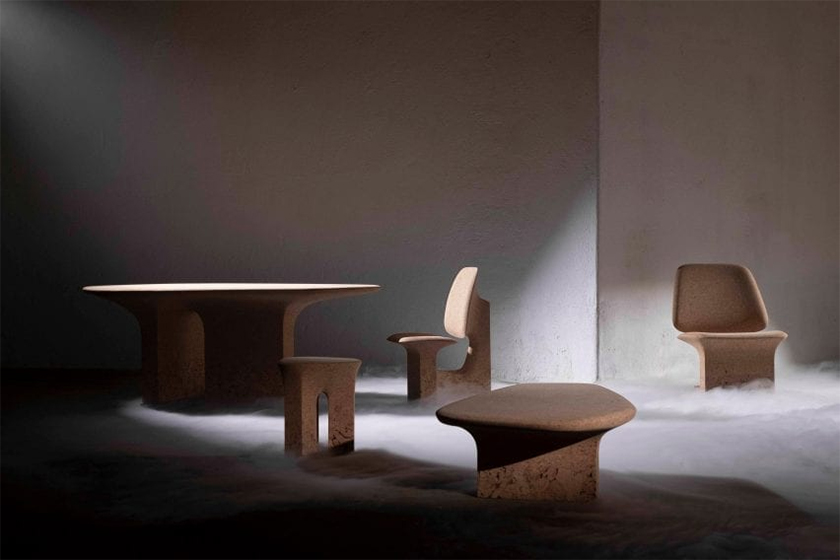
It was the devastating 2017 forest fire in Portugal’s mountainous Pedrogao Grande region that inspired Duchaufour-Lawrance’s Burnt Cork furniture collection.
Image courtesy of: Design Boom
The gallery’s second collection is called “Burnt Cork.” This grouping uses natural materials that include “bunho,” a perennial herb that is harvested by local artisans. The furniture designed is made from cork from the Algarve; there are also objects made from Estremoz, and candlesticks that use bronze from Peniche with the handmade candles that are formed with local beeswax. This process just kept on going… for example after he designed the candlesticks, Duchaufour-Lawrance realized that he also needed to make candles.
The sculptural pieces include chairs, stools, and tables made from discarded burnt cork… each piece with a long, specific history itself. The project is a dichotomy of opposites; but that is indeed where the beauty lies. And to think, this all happened accidentally when Duchaufour-Lawrance came upon a pile of discarded burnt cork. Amazingly, this process is necessary to protect the oak trees in case of a fire. Once harvested, the “burnt barrier” is peeled off the tree to allow the next layer of cork to grow better. The leftover cork is discarded… and perfect for the designer’s newest collection.
